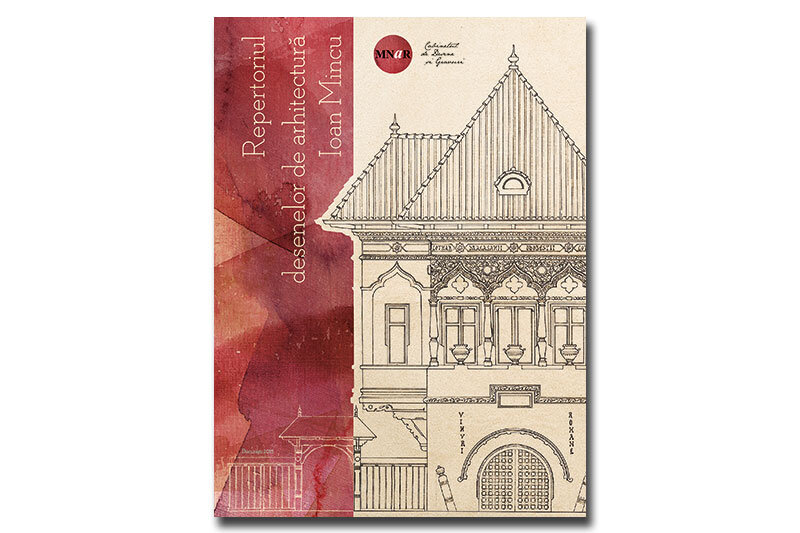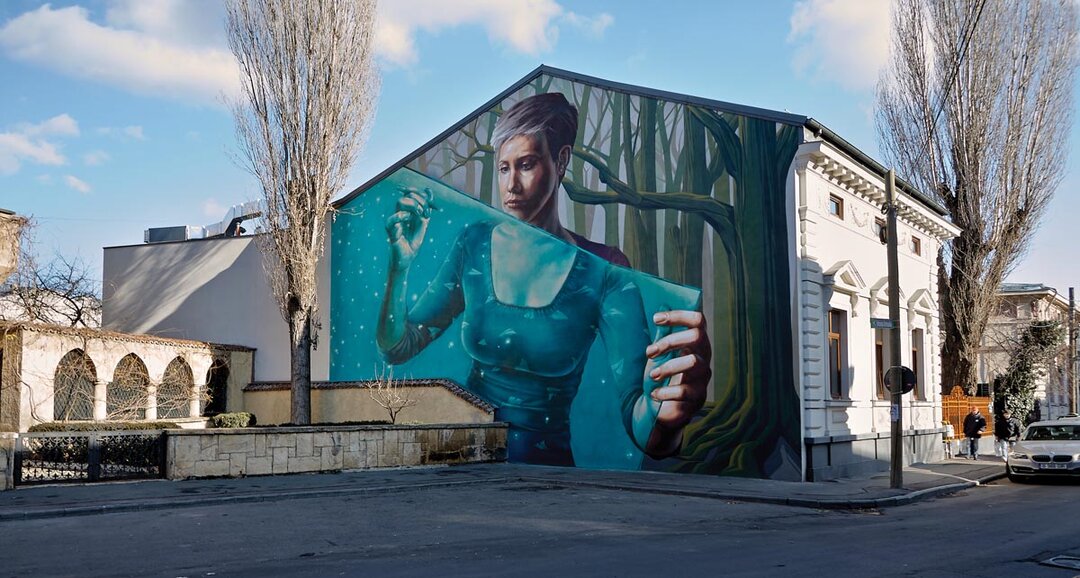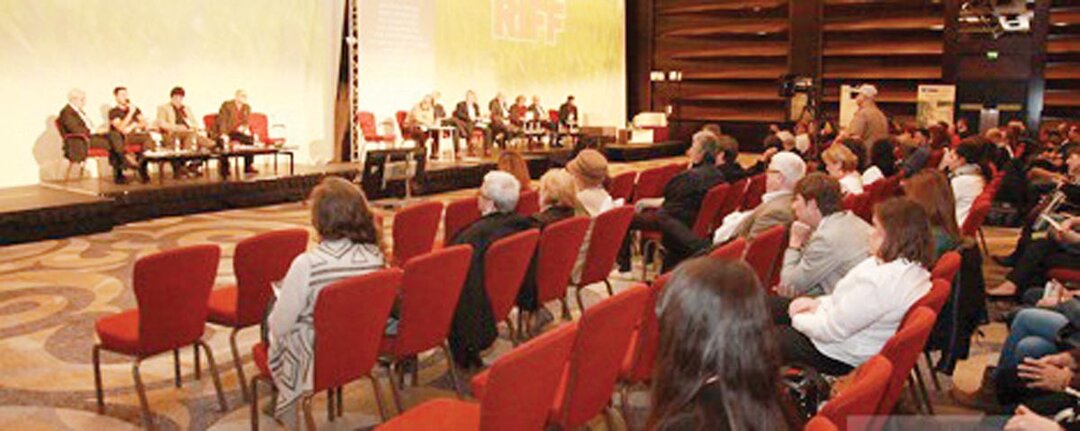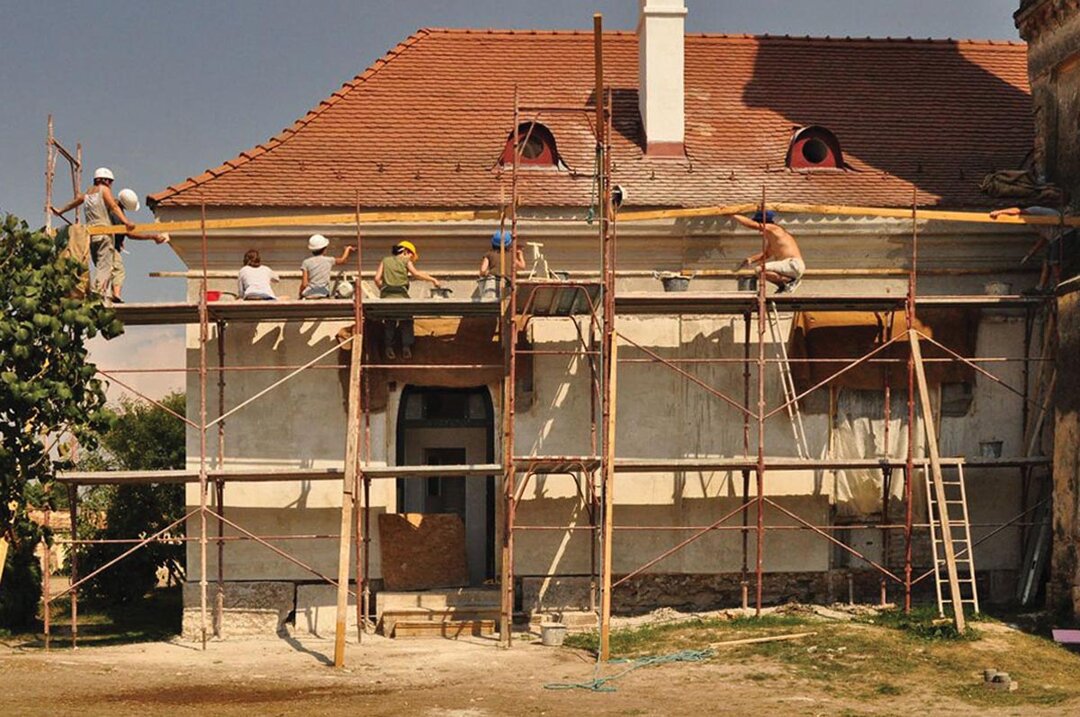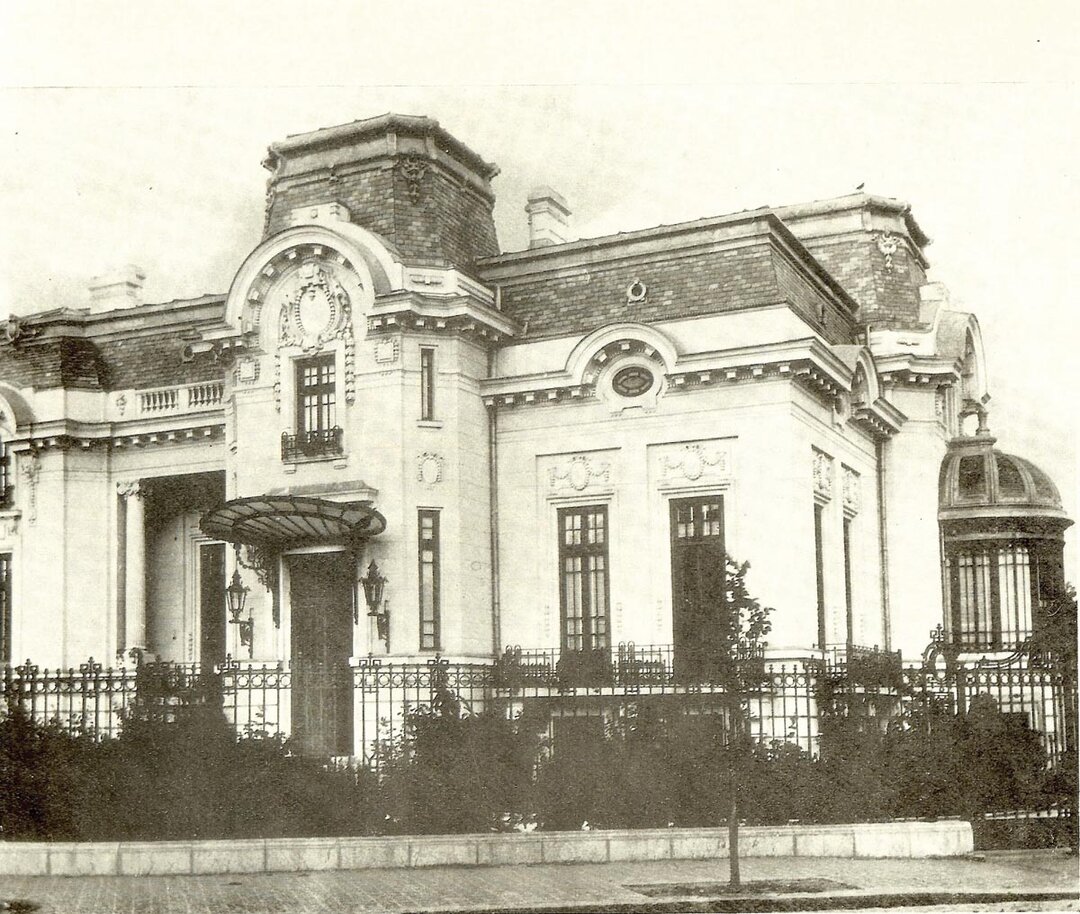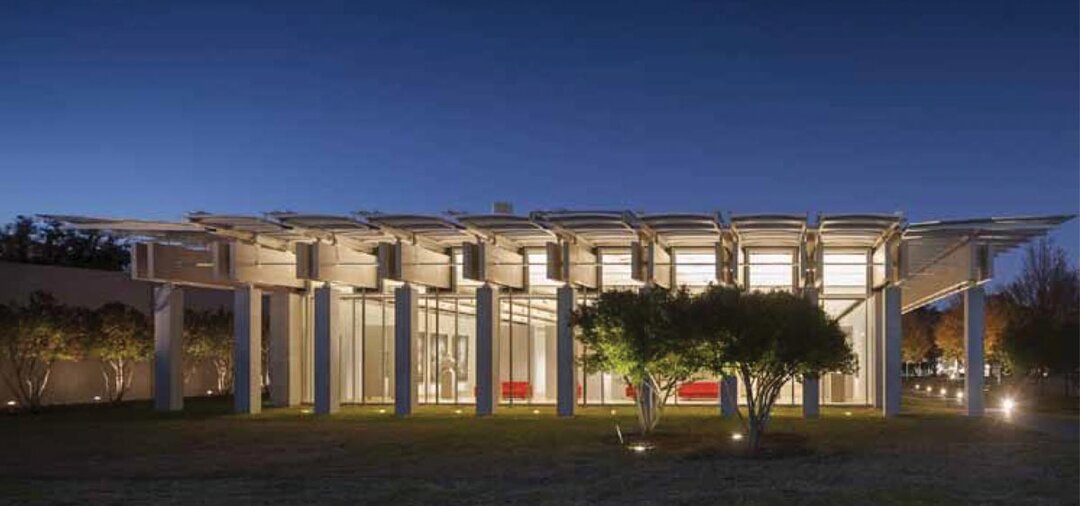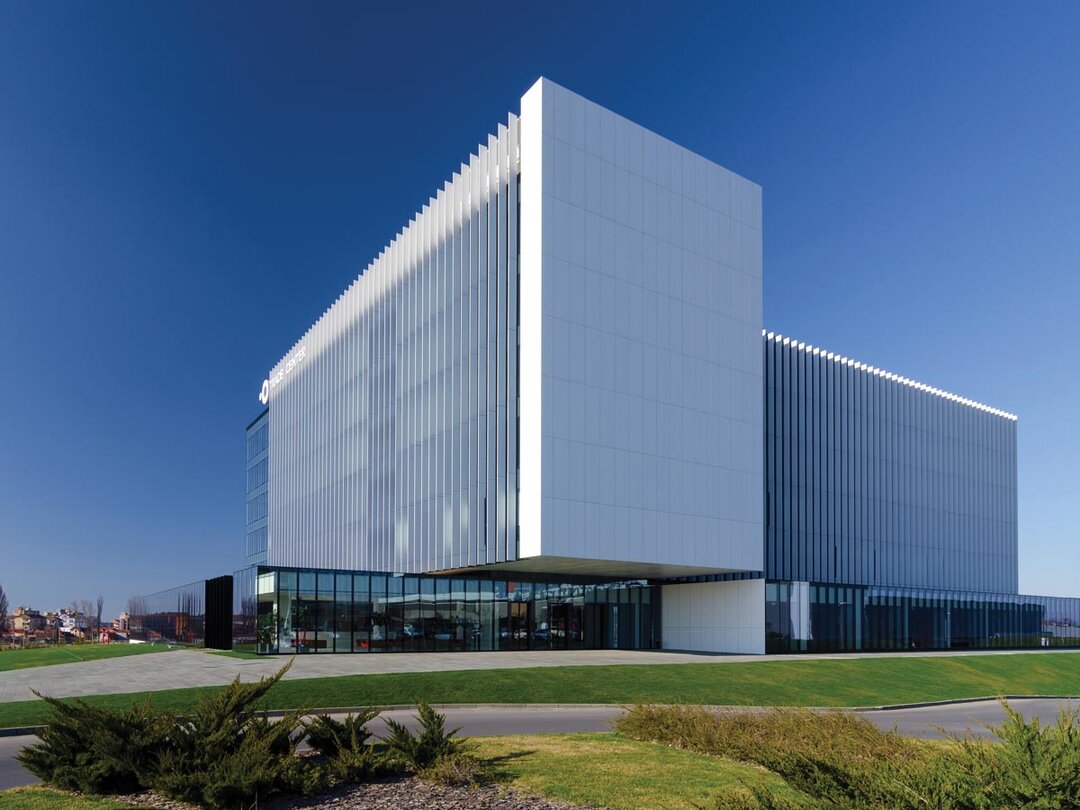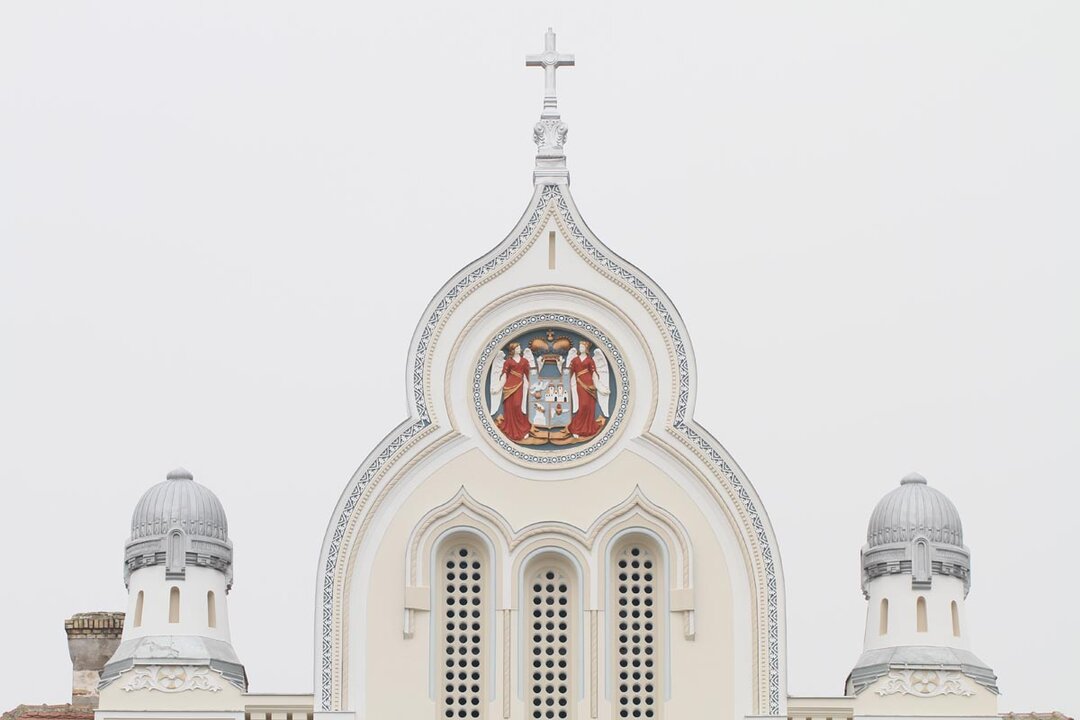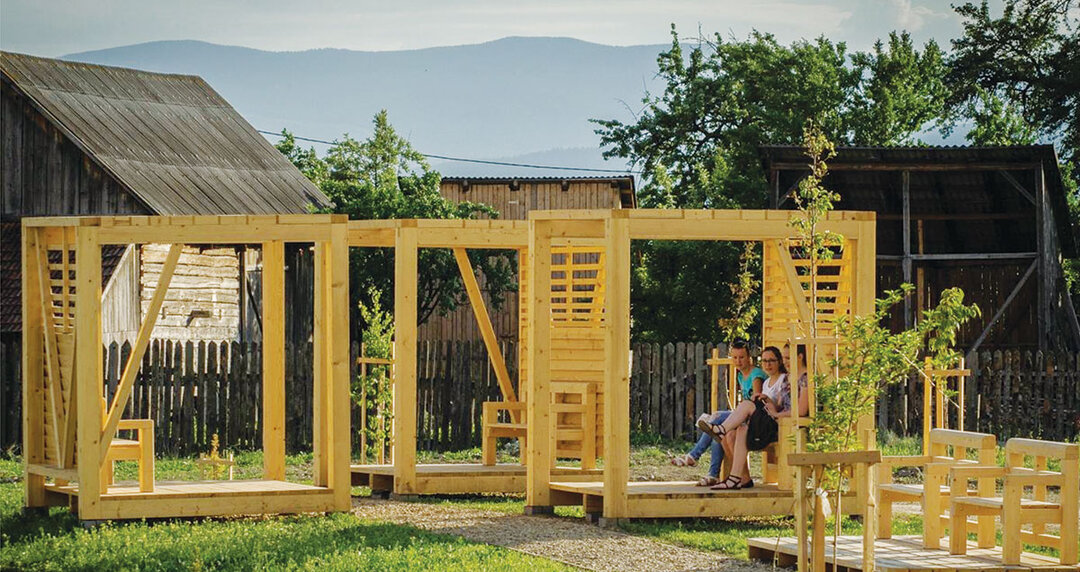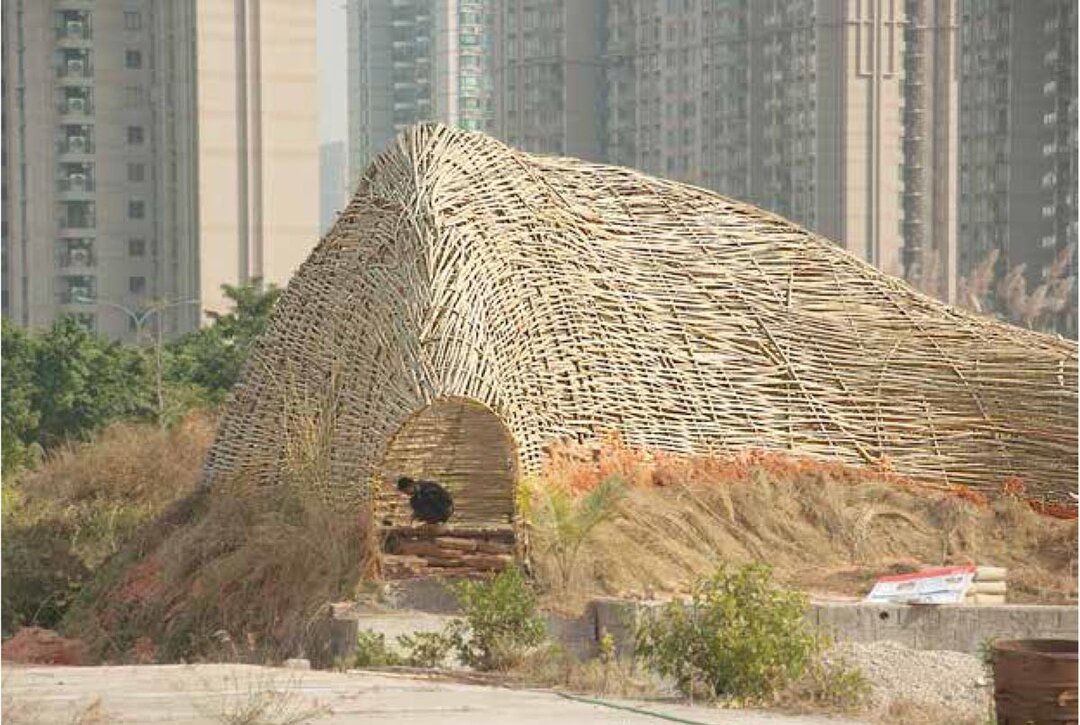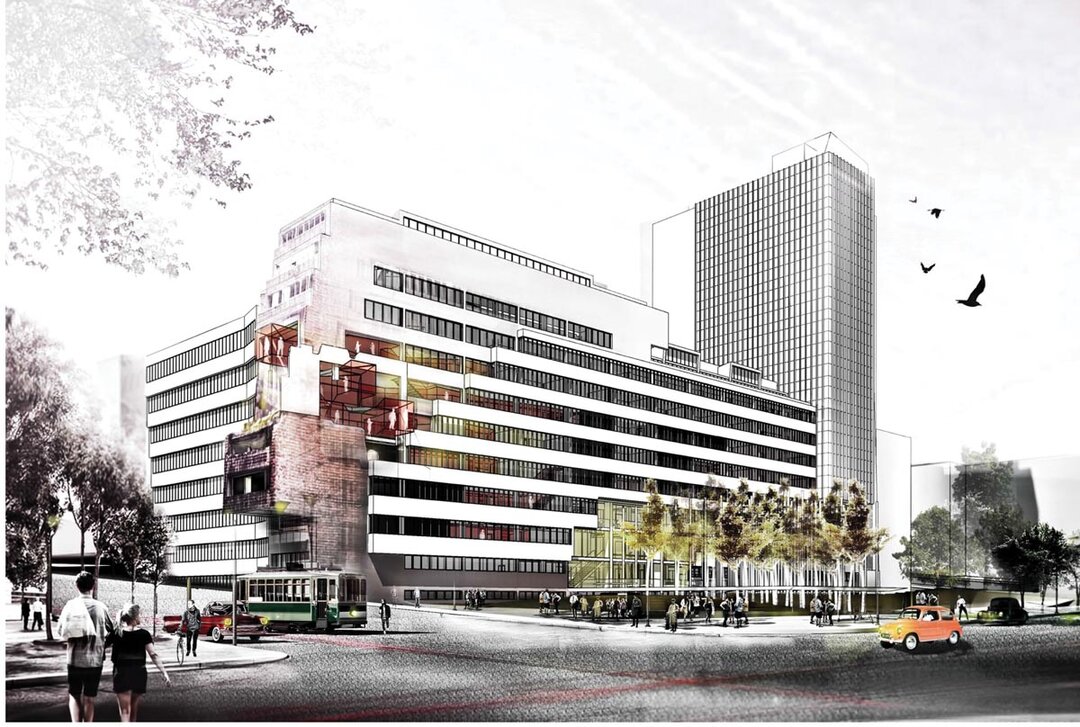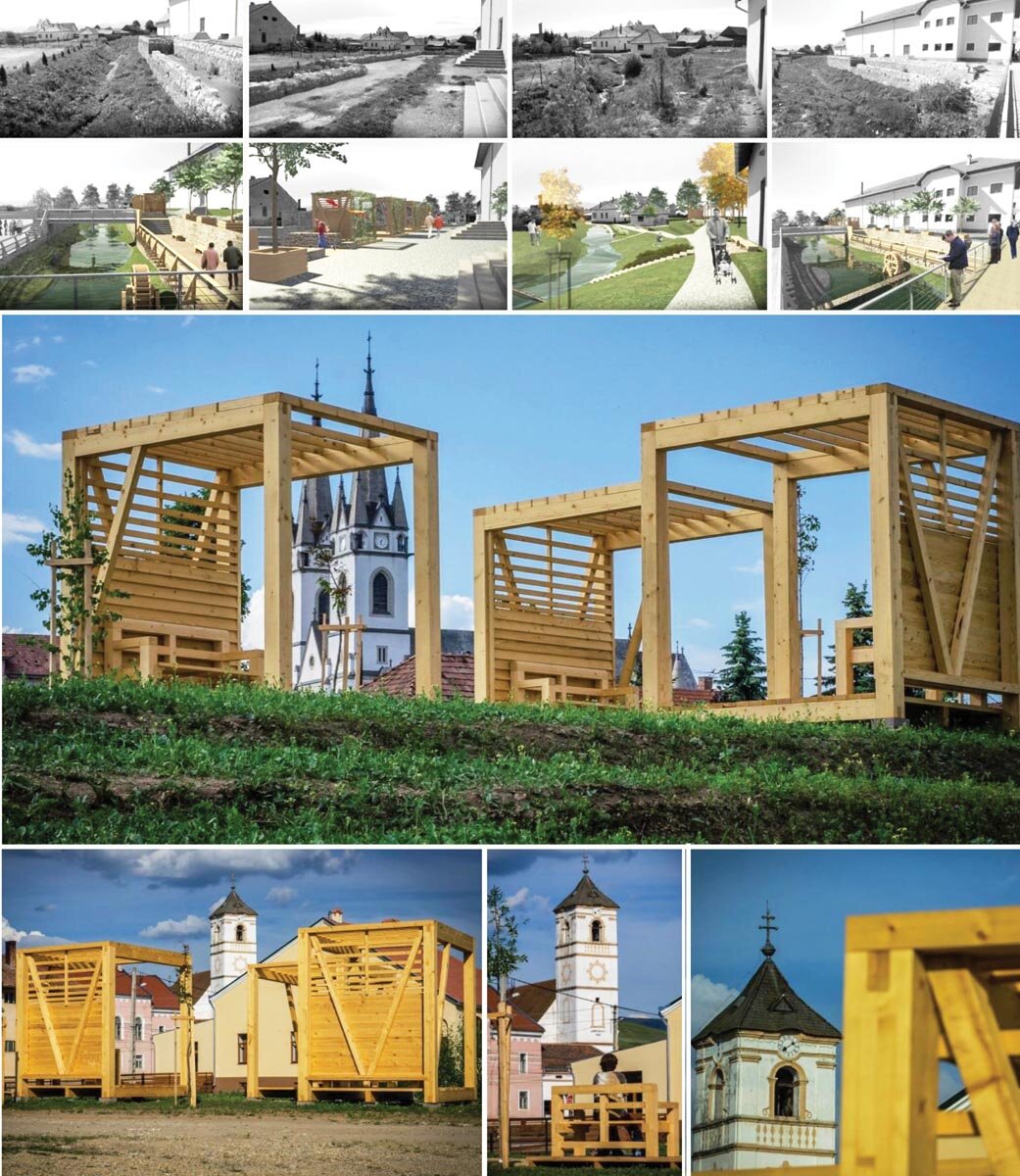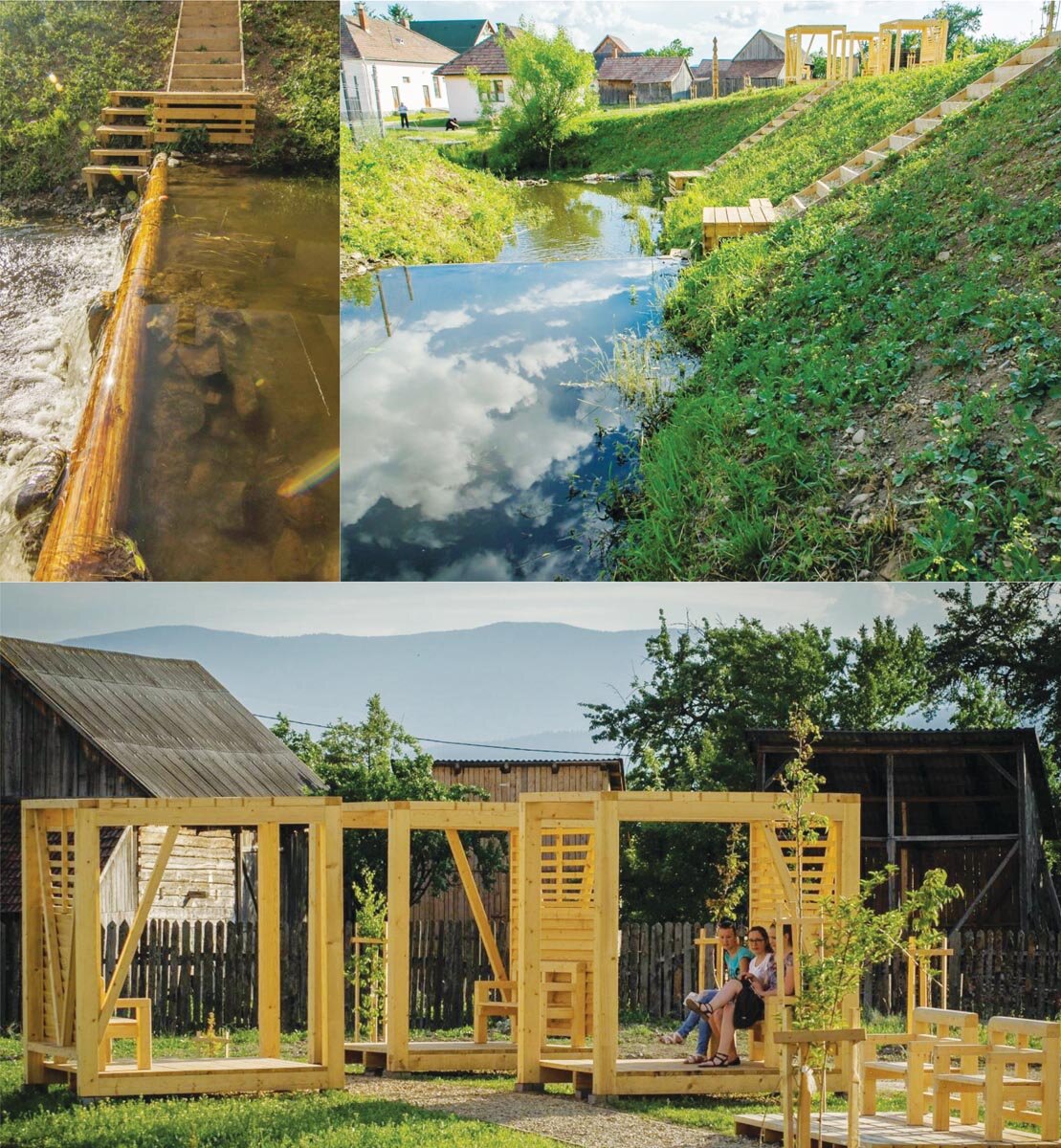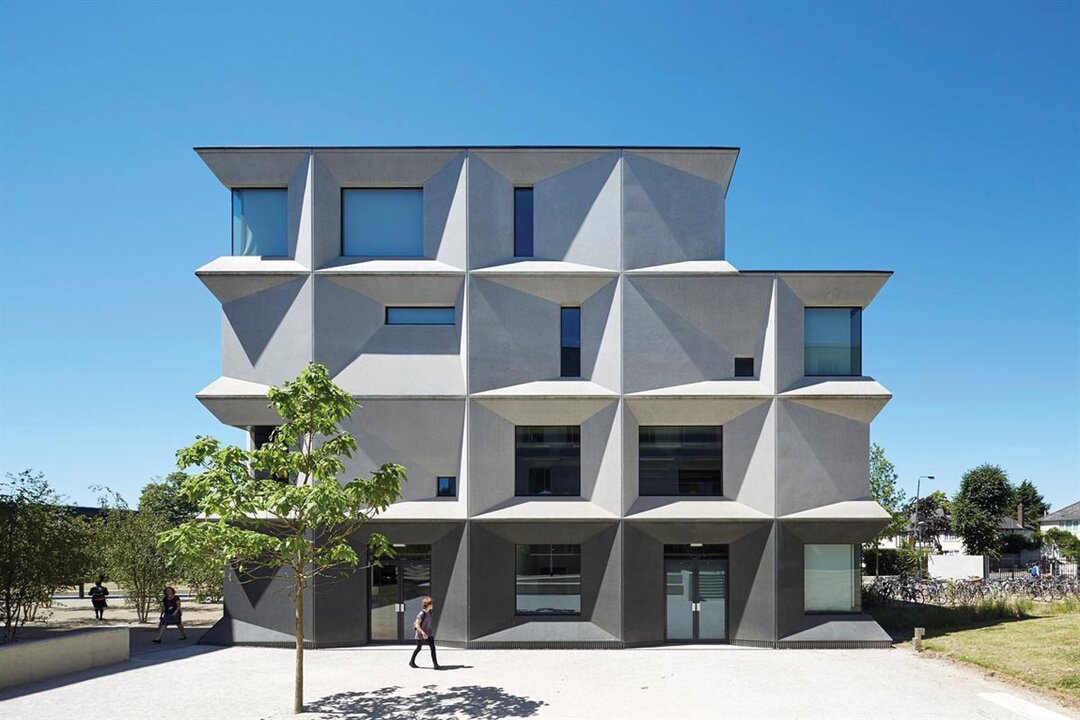
Retrieval of water shore, Ditrău, Harghita county
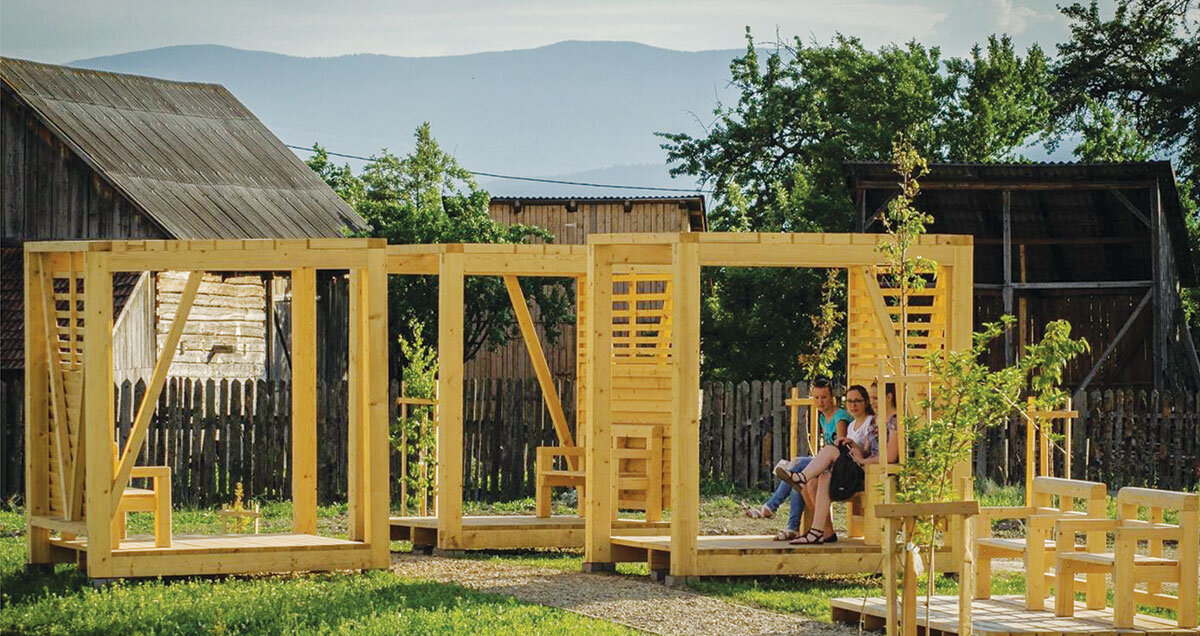
The former economic axis of the commune - the flowing water, dotted with mills, millstones and water spikes - reads only as an impenetrable jungle of ad hoc vegetation, undermined by the garbage thrown/brought by the post-flood flood. That's pretty much the situation before the intervention: an abandoned, almost forgotten, overgrown, useless pedestrian shortcut.
The Izefine topographic survey shows the "perfect" past, with the "tithe" structure, and marks two water mills on this site, while the third topographic survey of Transylvania confirms the long existence of the mills. The mills, the breaking of the ice, the binding and stabilizing of the bank, the crushing of the millstone, the machine-gun roar of the water turning the wheel are carried forward from the last century and will not be resurrected by nostalgia, any more than the wheel of time can be turned back.
Though the memory of the recent past still keeps alive a jar of memories: the old man washing his scarred hands after a day's work, leaning over unrepeatable moments washed by the water, women washing clothes on the shore, the rhythm of the maypole against the background of the gossip carried by the tide, the shadows of willows and guillemots dancing across the water mirror under the camouflage of tall vegetation.
How did it get here?
On the one hand, the national road - heavily traveled - has isolated this corner from the rural fabric of the "decima" (the characteristic organization of villages in the Szeklerland, a unit smaller than the village, perhaps a third of the village, even smaller), but where the local community was very well organized, life being tough in the mountains, securing the border.
On the other hand, the scale of the place has been broken, instead of the traditional volumes we have on the left and on the right two buildings, "the size of a block" each: the house of culture and the building of the cooperative from the socialist period. This rupture of scale has also meant the erasure of the typical rural fabric.
The space next to the stream in Ditrău was therefore an undefined and unstructured place, where, in practice, man was lost in the amorphous space bordered by a vast socialist-era cultural center, and the project is based on two ideas and a single aim: to reclaim the bank and facilitate contacts between the locals, thus contributing to improving the elements of urban/rural life in an appropriate setting, implicitly developing the local community in a world where the community of "decimals" no longer exists, the unstructured space being eloquent proof. (...)
Read the full text in issue 6 / 2015 of Arhitectura Magazine



